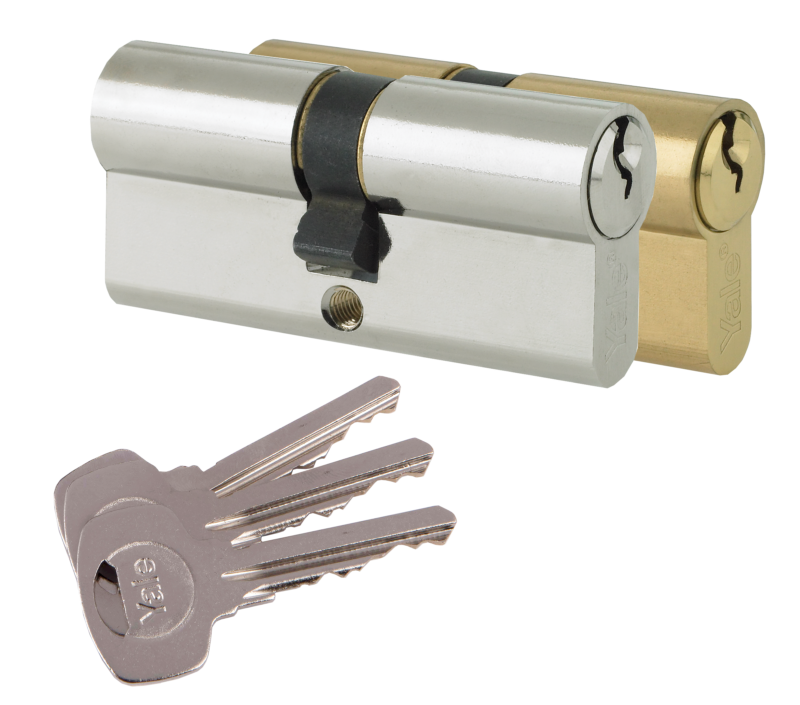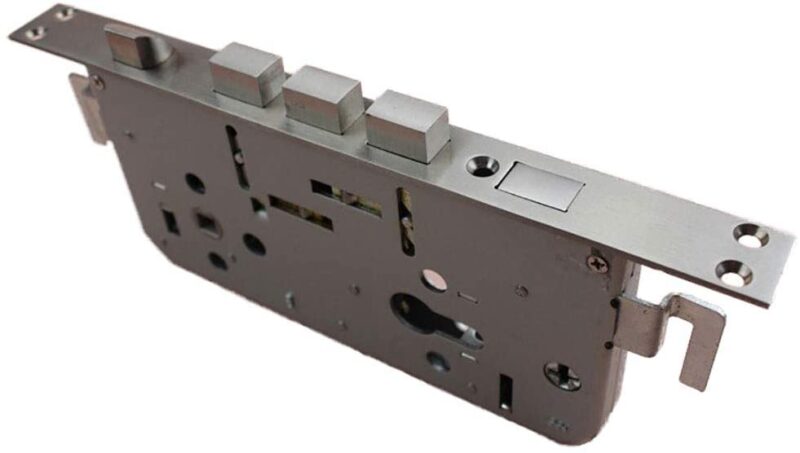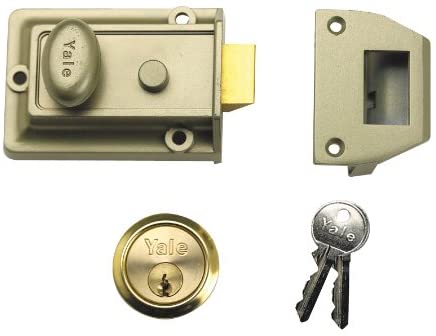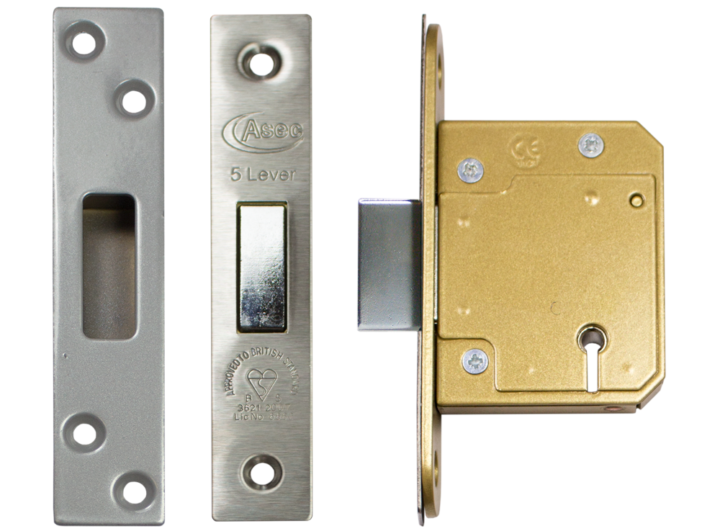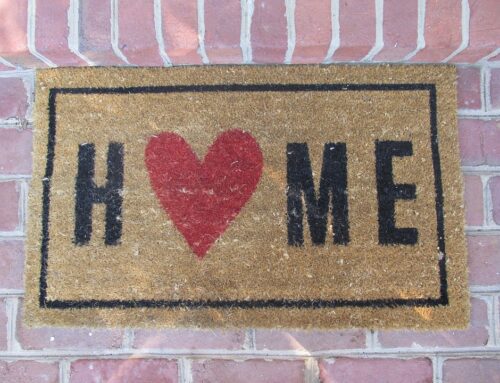Every 106 seconds, a burglary takes place in the UK, and the estimated average cost of residential burglary is around £3,030. What’s more alarming is that 58% of these crimes occurred when the residents were home. A good way to protect yourself is to make sure all the doors and windows are properly closed – whether you are at home or not. However, installing a secure lock also minimises the risk of being robbed.
And yet, choosing an adequate door lock can seem discouraging with all the options out there. The locking system that best fits your home or business may vary depending on the door you want to secure. It is crucial to consider the location of the door (is it a front door or not), the door’s material and how the lock system works. For example, having a complex lock system for their bathroom door is unnecessary for most people.
We have put together the characteristics for the most common lock types to help you pick the most secure door lock for your needs. You can find some insight into how these systems work, and also – our professional locksmiths give hints about the lock fitting – where’s the best to instal them and why.
Read also: 10 + Reasons Why You Should Change The Locks Immediately Part 1
Euro Cylinder Locks
Euro cylinder locks are among the most common systems fitted to modern buildings. They are also called ‘snap safe locks’ or ‘anti-snap locks’) and are designed and tested to withstand forced entry using the lock snapping or blowtorching. Both of these techniques ultimately lead to snapping the lock cylinder. This system is key-operated, driving a deadbolt in the lock case in the door frame, thus securing the door in place. It’s essential to check the rating of your euro-cylinder lock before fitting it to ensure it is genuinely anti-snap. To be safe, make sure to choose a Euro cylinder lock that is either SS312 Diamond standard or TS007 3 Star. If your lock has the British Kitemark, this doesn’t automatically mean it will resist lock snapping. The only way to know if your lock is anti-snap is to ask a professional locksmith.
Advantages
- Easy to use.
- Ease to change or upgrade to a higher security standard
- Using a euro cylinder significantly reduces the risk of lock snapping, drilling, picking, or bumping if fitted to the correct lock standard.
- Euro cylinders can be keyed alike or master keyed so that you can use fewer keys to a property.
Disadvantages
- If you don’t choose the correct lock standard, your property is at risk. Euro cylinders that don’t comply with the British standard can be defeated in seconds by cylinder snapping or other attack techniques.
Where to Instal a Euro Cylinder Lock?
You can often find euro cylinder locks on any external doors – front and back doors or patio doors. These locks are also fitted on internal doors in offices, schools, hospitals and other commercial buildings.
Check also: 10 + Reasons Why You Should Change The Locks Immediately Part 2
Multipoint Locking System
This lock is installed onto the door’s body and bolts the door into the frame. As you may have already guessed, the system locks at multiple points. It is key operated and offers a high level of security. If somebody tries to force the door, the mechanism distributes the weight throughout multiple points – 3, 5 or 7, making it harder to break.
Advantages
- The several locking points make forced entry more difficult.
- It uses only one cylinder to lock the whole mechanism.
- You can key alike multiple cylinder locks. Therefore you can reduce the number of keys for your property.
- You can easily change the cylinders when you need to repair or replace them.
Disadvantages
- If you decide to key alike multiple cylinders, this is advantageous in terms of keys. However, if somebody tries to force the door, they will have fewer locks to defeat.
- To secure the door properly, you need to double-lock the mechanism. That can be problematic for house guests or children as they could unintentionally leave your home vulnerable.
- There are a few other peculiarities of these locks. For example, you must lift the handle to secure the door with some mechanisms. So, you should acquaint yourself with these peculiarities and decide if they work for you.
Where to Instal a Multipoint Lock?
Typically multipoint locks are installed to composite or UPVC doors, making them popular for newly built homes. However, a professional locksmith can also instal them on timber or Aluminium doors.
Multipoint locks are highly secure and often used on front and back doors.
Check also: What Can a Locksmith Do For You?
Rim Cylinder with Deadlatch
Rim locks (also called Nightlatches and Yale Locks) are surface-mounted to the inside of a door. Their cylinder goes through the door, and a key operates the lock from the outside. A deadlatch also automatically locks itself whenever the door is closed. This system makes leaving the property quicker while being safe, knowing the door gets locked behind you.
Advantages
- Easy to use
- Locks automatically upon shutting the door, reducing the risk of leaving the property unlocked
Disadvantages
- Unless you get an antithrust night latch complying with the BS 3621standard, you might have to install an additional lock to improve security.
Where to Instal a Rim Cylinder Lock?
Professionals usually instal rim locks to wooden or timber doors and less often to glass panel doors. Deadlatch or night latch locks are fitted on external doors because of their high security. Getting a Night Latch of the approved standard is often a requirement for some insurance policies.
Read also: How To Find Emergency Locksmith?
Mortice Locks
Mortice locks are embedded into the door, but their mechanisms allow them to be easily taken apart to be serviced and repaired when necessary. There are mortice locks with 3, 5, and even 7 levers, the most commonly used is the 5 lever mortice deadlock. All mortice locks are locked from both the inside and outside using a key. A mortice lock with less than five levers doesn’t comply with the minimum insurance requirements. However, it’s wise to confirm with a professional locksmith that the 5 lever or 7 lever mortice lock you’re choosing is BS3621 approved.
Advantages
- Ease to replace when needed.
- Mortice locks come in a great range of sizes and finishes, so you can choose one that best fits your needs.
- Even if burglars break a neighbouring window to reach inside, they can’t unlock the door. Also, if they break in through a window, they can’t escape the property unless there is a key inside.
- British Standard Mortice locks are compliant with most companies’ minimum insurance requirements.
Disadvantages
- Mortice locks don’t come with an automatic locking option
- You cannot fit a mortice lock on a door thinner than 35 mm
Where to Instal a Mortice Lock?
Professional locksmiths commonly fit mortice locks to wooden doors as they cannot be installed on uPVC & composite doors. Lever mortice locks are used on external doors. This locking system has several lever variations: with 2, 3, 5 or 7 lever mechanisms, but only 5 lever locks and above comply with the British Standard. Only the British Standard mortice locks are fully tested against common burglar methods like lock picking and drilling.
Check also: 5 Quick Safety Inspections You Can Do By Yourself
How to Make the Best Choice For Your Needs
When changing the locks in your property, you should first consider the location of the door and the level of security you need. Identify the suitable options and narrow down which locks are appropriate for the material of your door. If you fit an external door, ensure the lock meets British standard requirements and check whether you need a second lock to meet security requirements. Finally, we strongly recommend hiring a professional locksmith to fit the locking system to your door.

